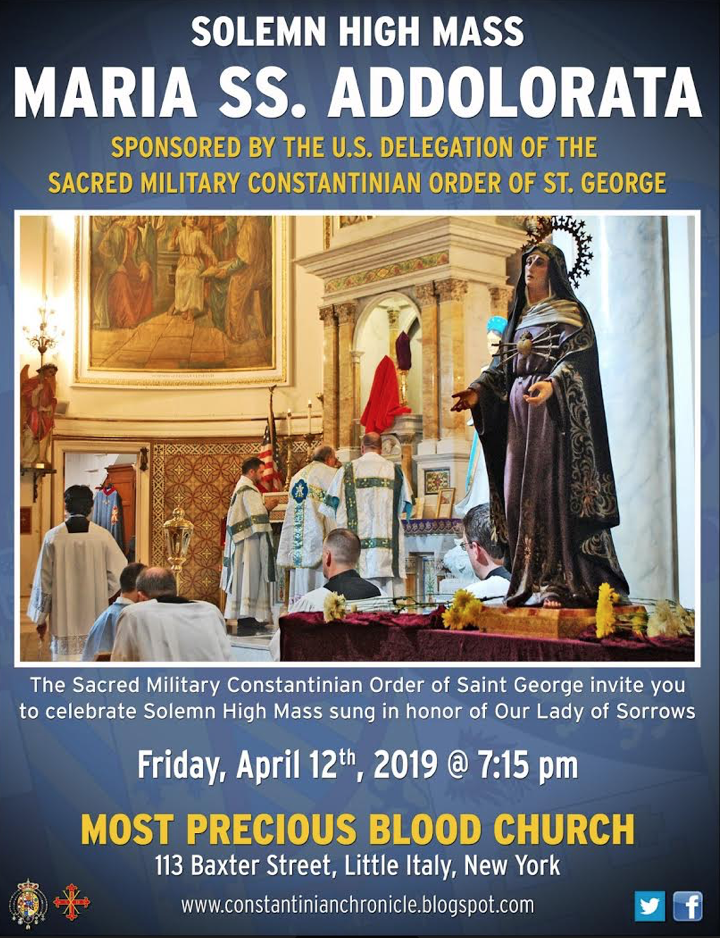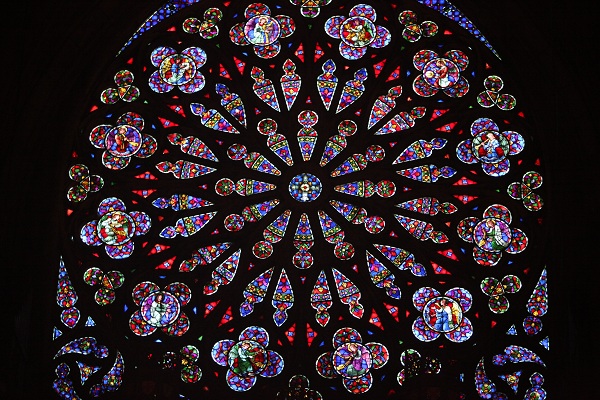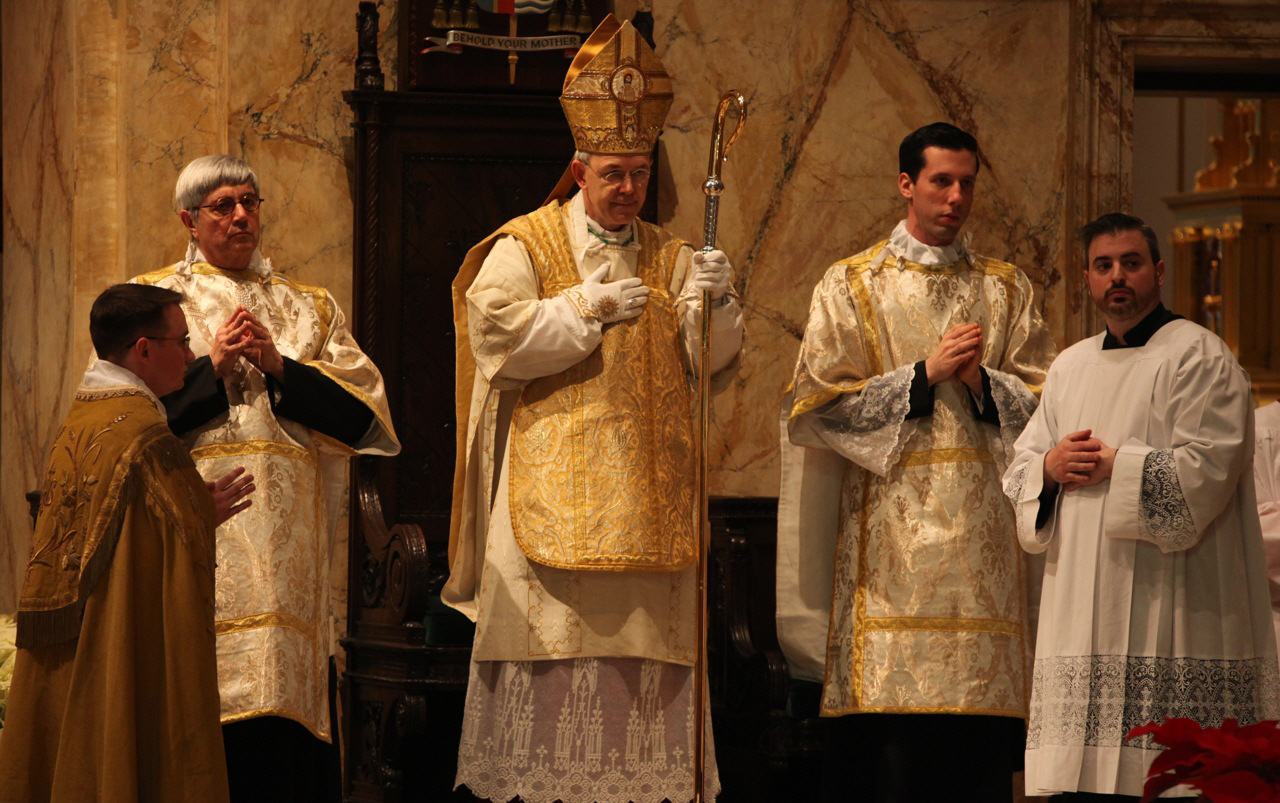Coverage of Palm Sunday at St. Mary’s Norwalk continued from Part I
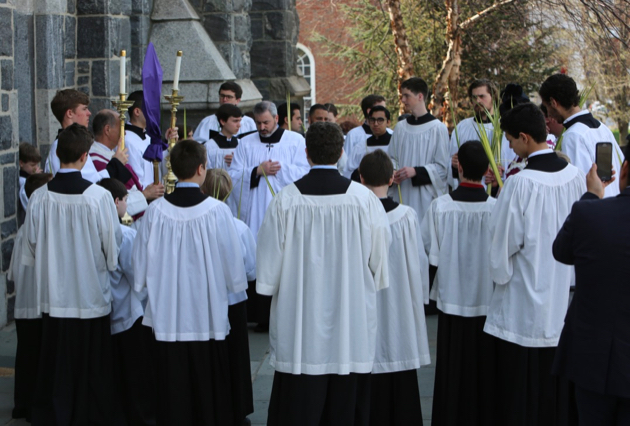
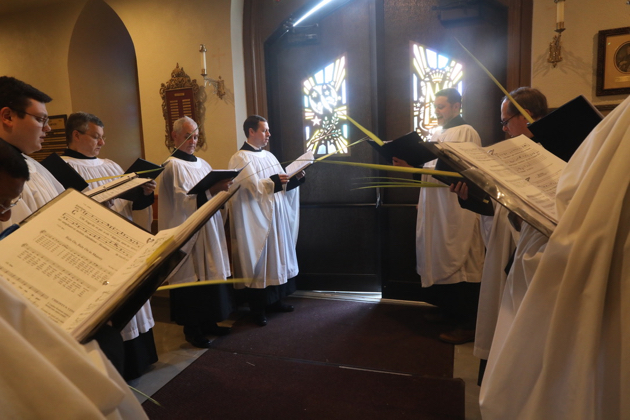

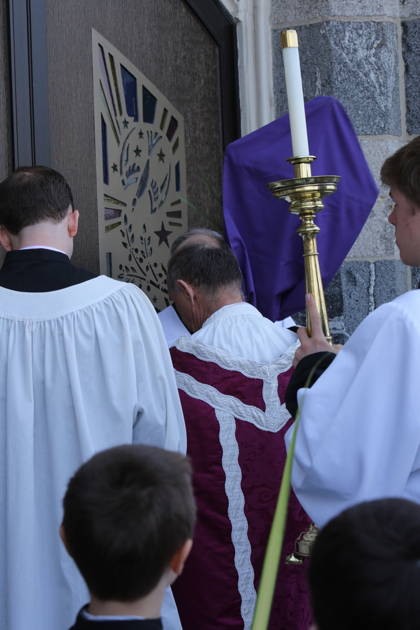
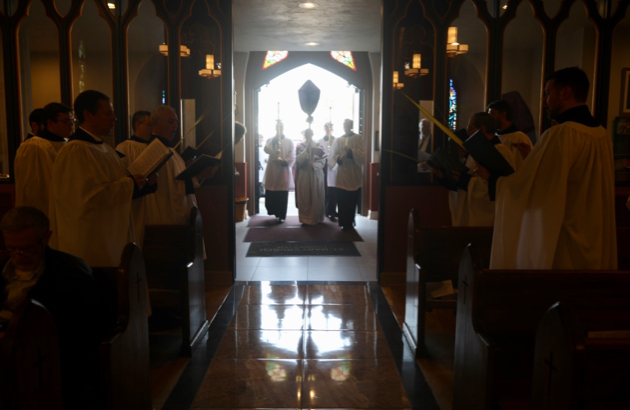



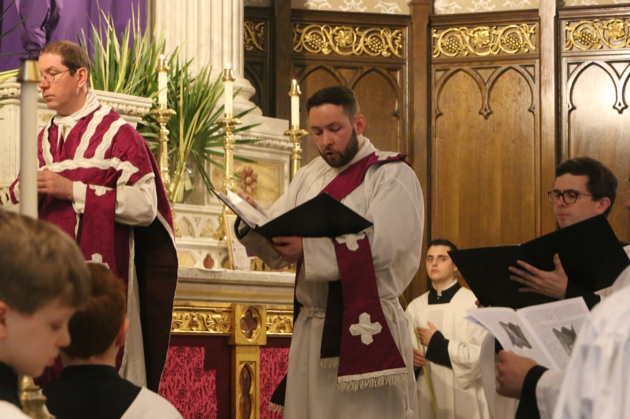
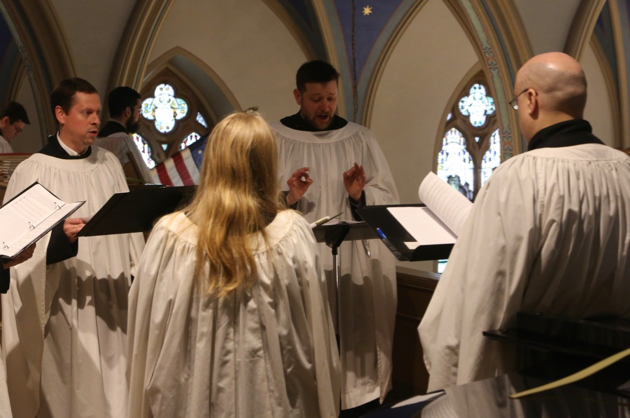
For the Gospel, the choir in the choir loft provides the polyphonic responses of the crowd, the Turba.


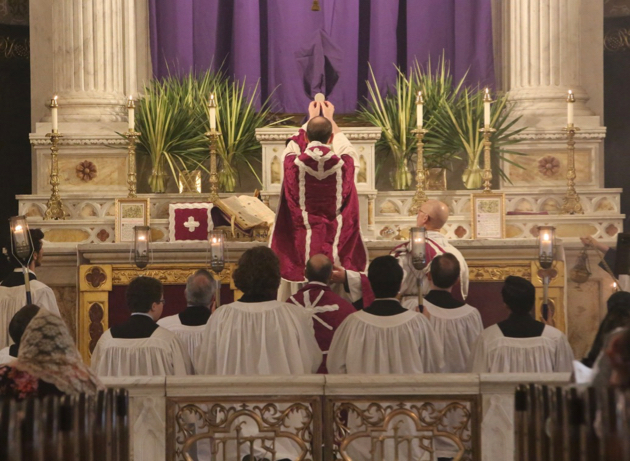
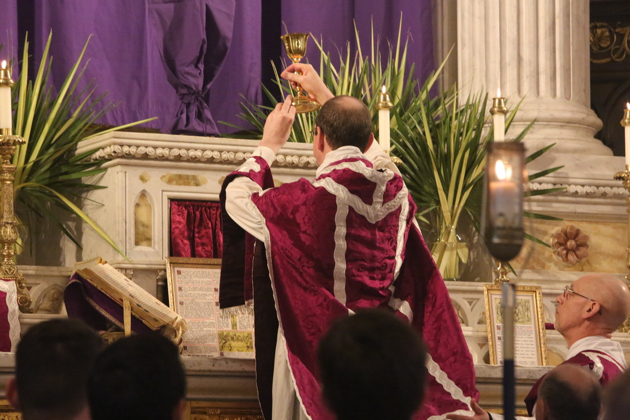
14
Apr














14
Apr
Mass of the Palms and the Procession
The full rite for the blessing of palms takes the form of a “Missa Sicca” (dry Mass) and follows the schema of the Mass, save that the blessing of palms replaces the consecration fo the Eucharist.
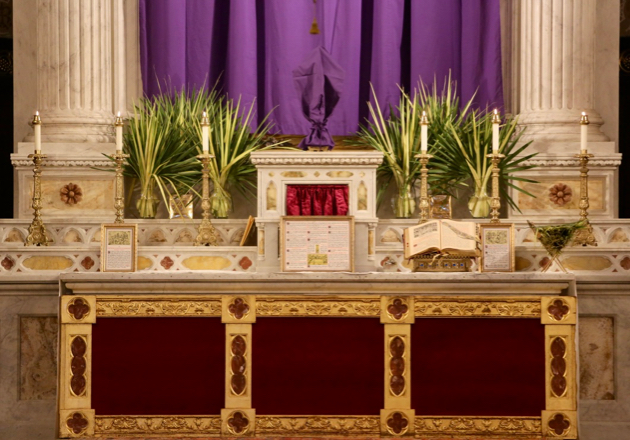


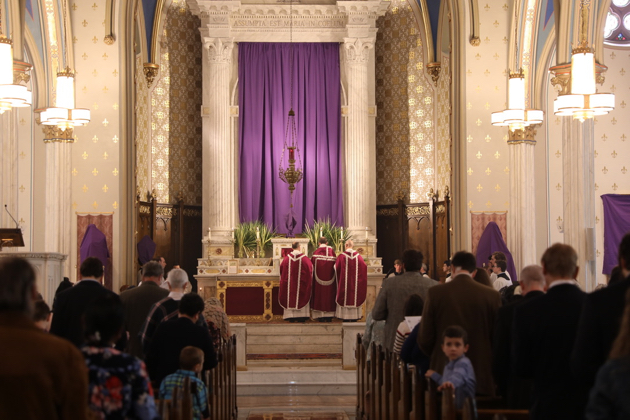
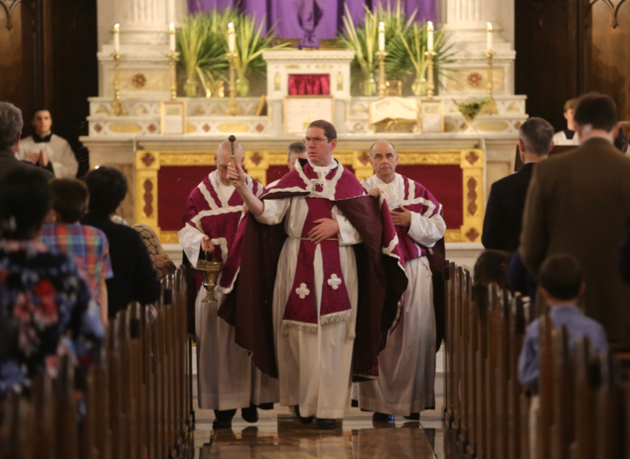
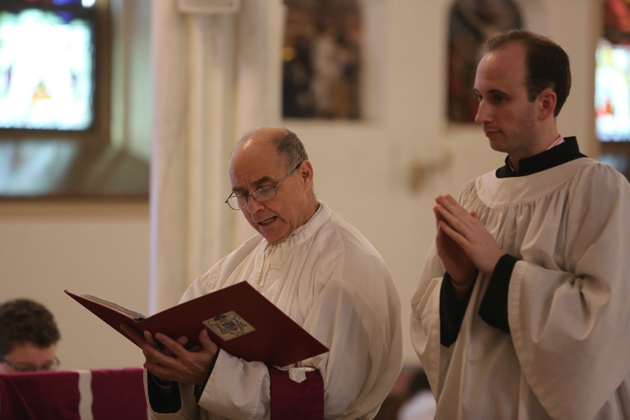


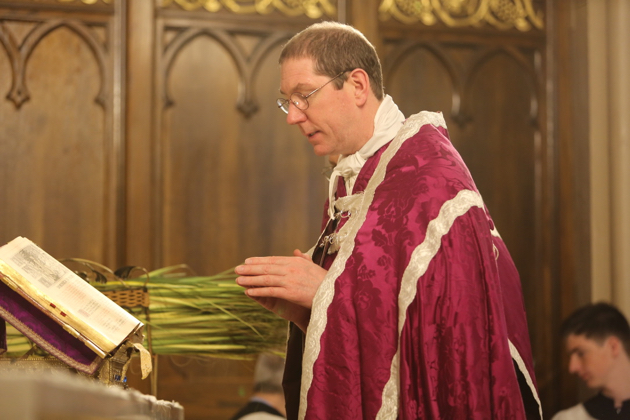

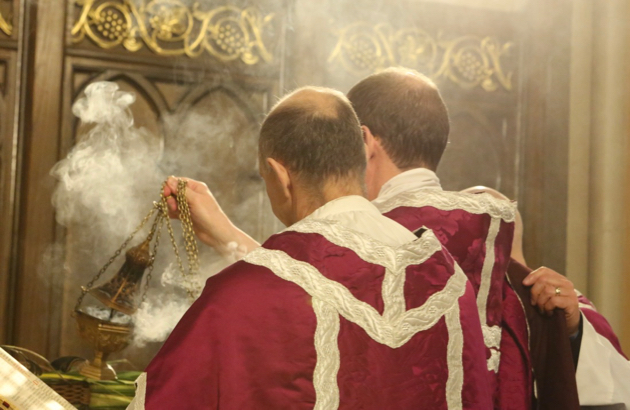
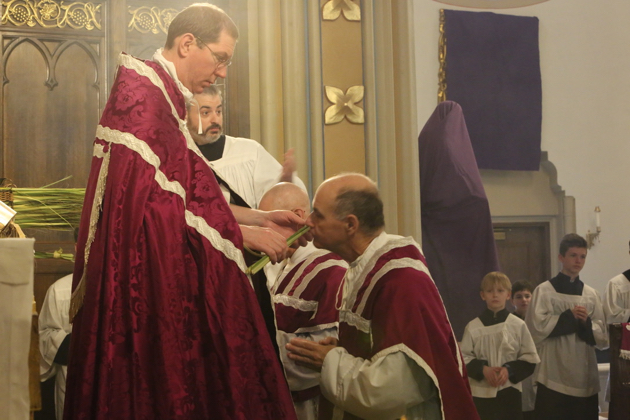
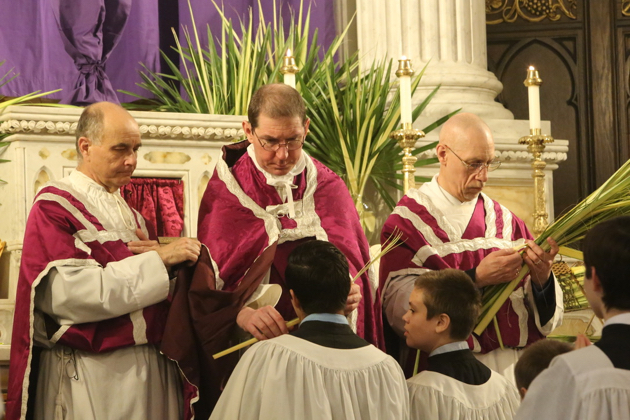
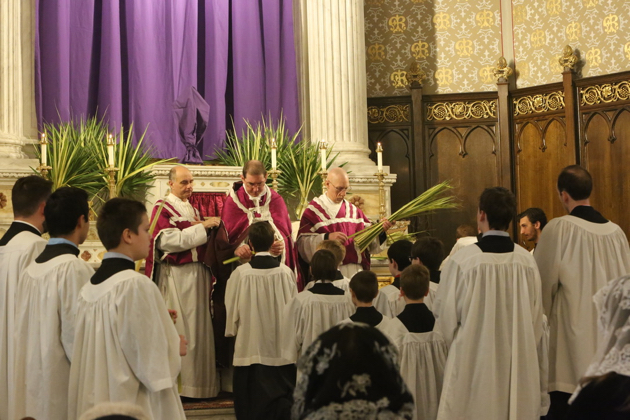
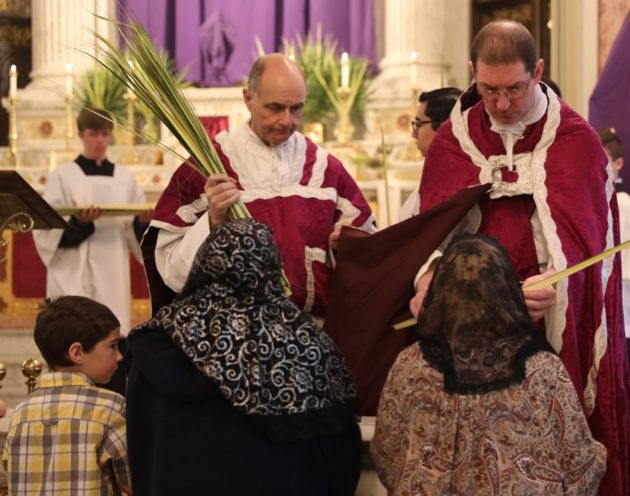
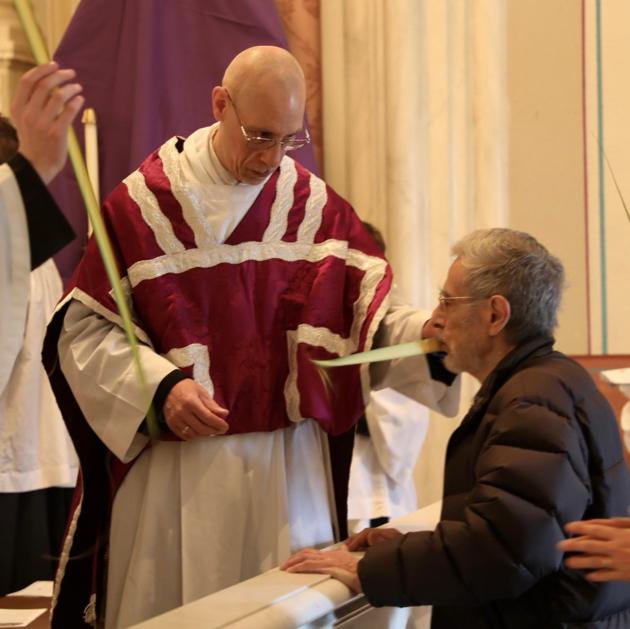



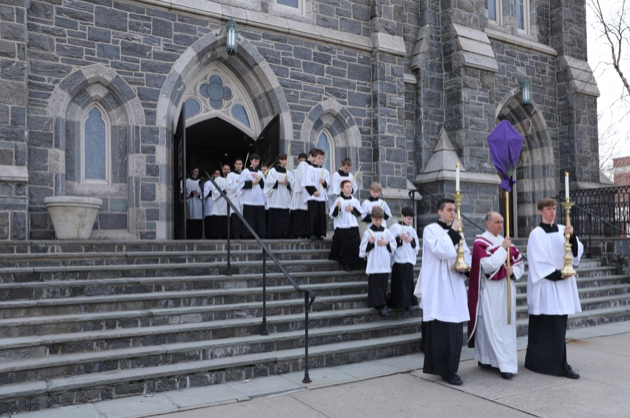
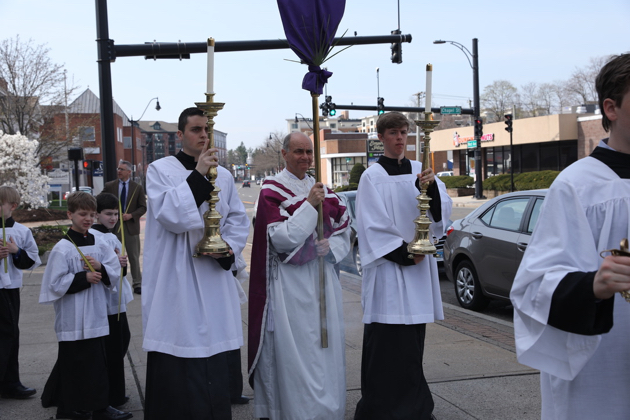

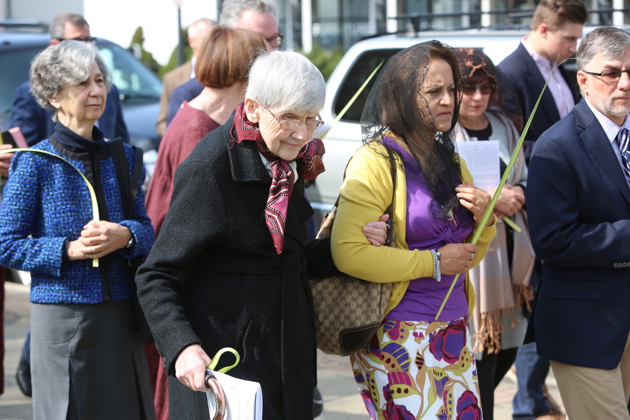

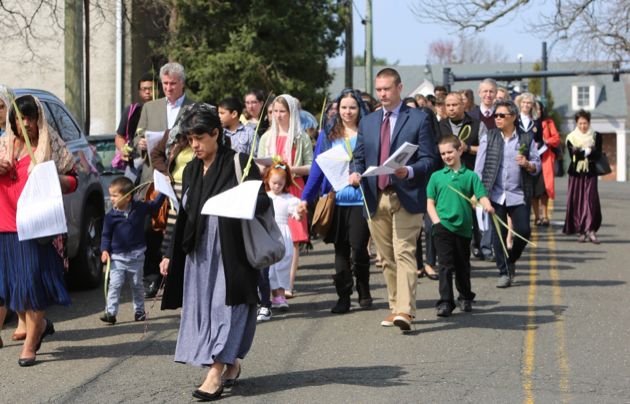
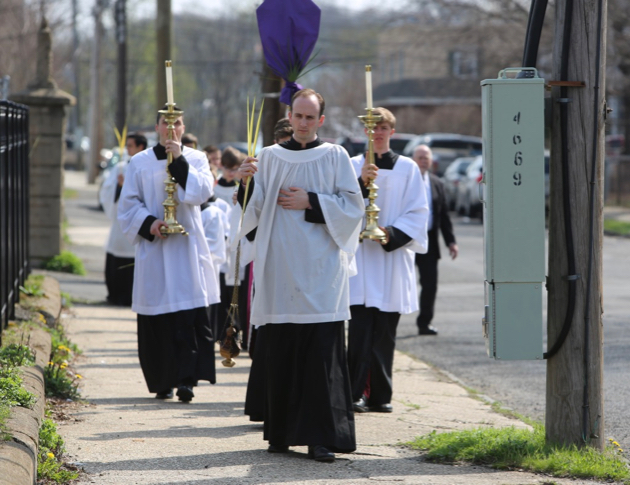
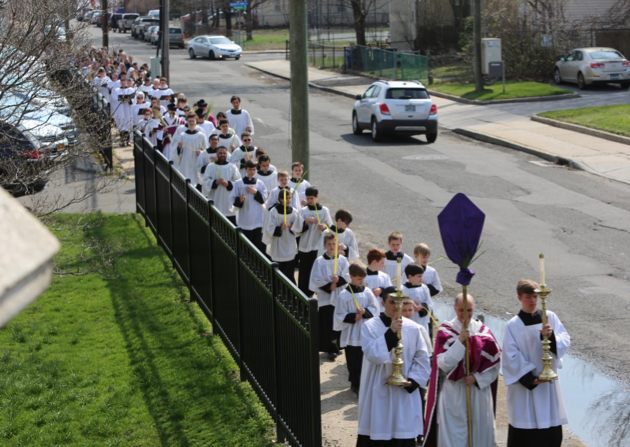
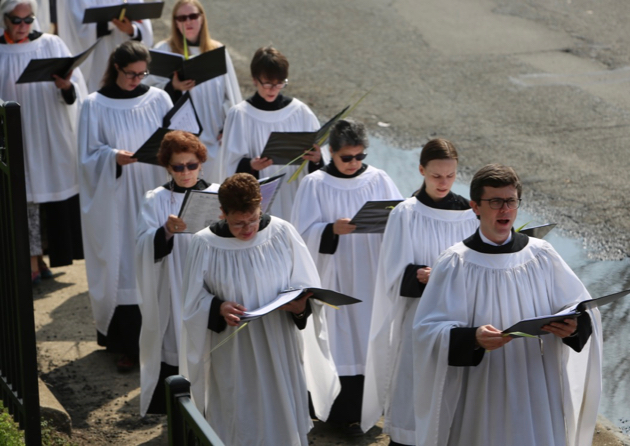

13
Apr
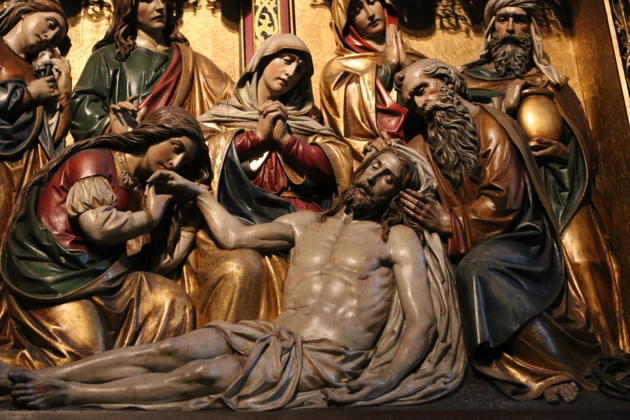
For a schedule of traditional liturgies during Holy Week in Connecticut, New York and New Jersey, go to Holy Week Schedule
13
Apr
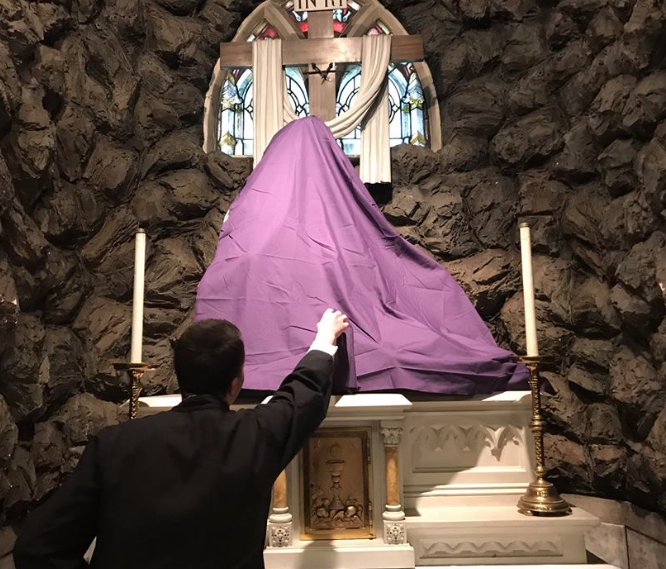



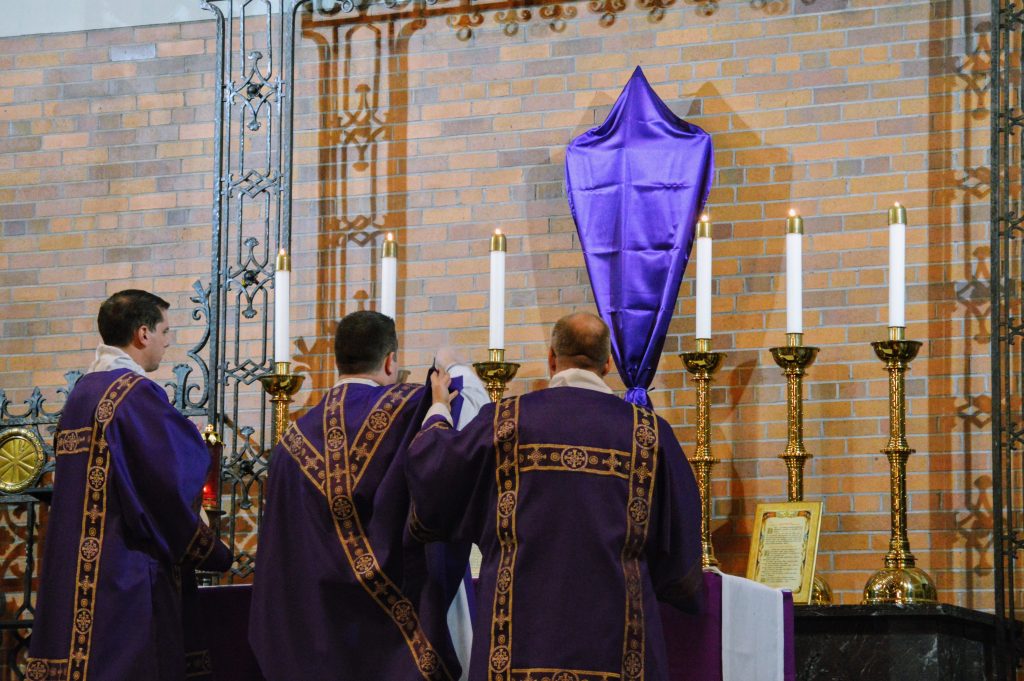
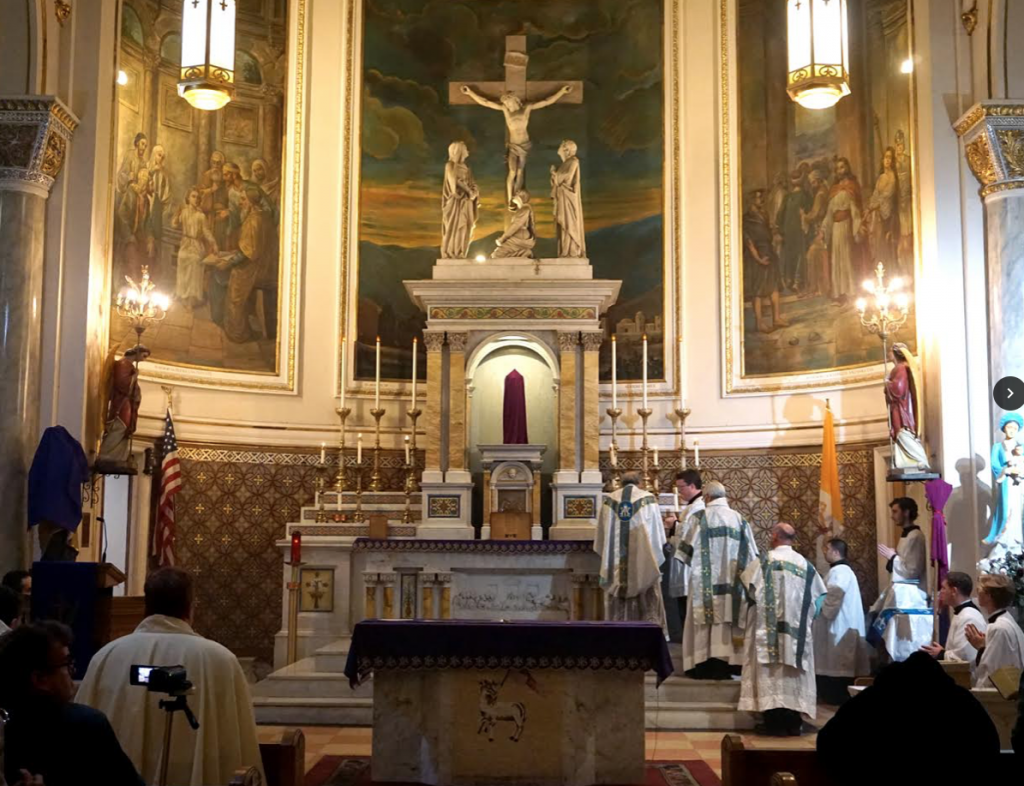
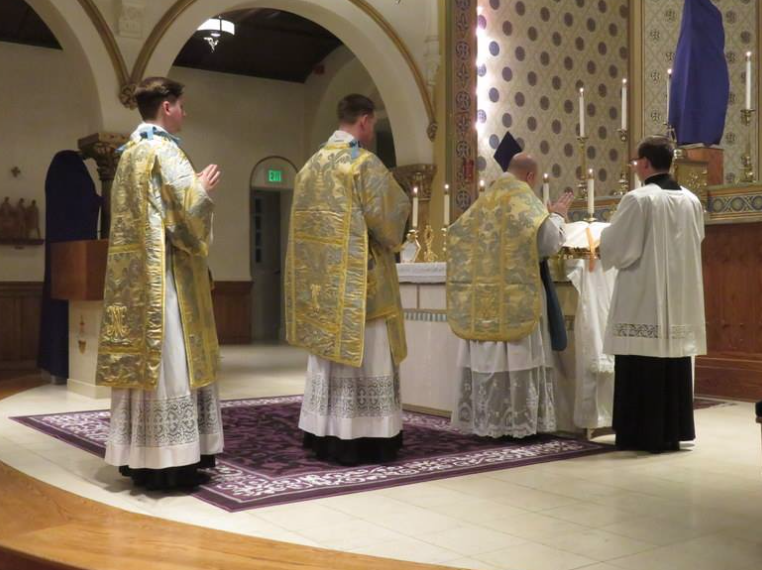
13
Apr
| The eighth annual Mass for Artists will be celebrated Monday, May 13, 7:00 PM, at the beautiful Church of St. Vincent Ferrer. It will be offered in the Dominican Rite. The Catholic Artists Society sponsors this Mass each year to invoke God’s blessings on all artists, that their hearts might be cleansed and their minds enlightened by the inpouring of the Holy Spirit. |
10
Apr
Palm Sunday (April 14) 9:30 AM: Solemn Traditional Latin Mass with Blessing and Procession.
Holy Monday (April 15) 8:00 AM: Traditional Latin Mass.
Holy Tuesday (April 16) 8:00 AM: Traditional Latin Mass.
Spy Wednesday (April 17)
8:00 AM: Traditional Latin Mass.
7:00 PM: TENEBRÆ of Maundy Thursday.
Maundy Thursday (April 18)
7:00 PM: SOLEMN MASS in Cena Domini.
9:00 PM: Vespers and Stripping of the Altars.
9:30 PM: Pilgrimage to the Seven Churches of Norwalk.
9:00 PM-8:00 AM: Vigil before the Blessed Sacrament in repose.
Good Friday (April 19)
8:00 AM: Matins & Lauds of Good Friday.
3:00 PM: The MASS of the PRESANCTIFIED.
7:00 PM: Procession of the BODY of CHRIST and Burial with COMPLINE.
Holy Saturday (April 20)
8:00AM: Matins & Lauds of Holy Saturday.
2:00 PM: Blessing of Easter Food.
7:00PM: The GREAT VIGIL of EASTER.
Easter Sunday (April 21) 9:30AM: Solemn Traditional Latin Mass.
Palm Sunday: 9:30 Solemn High Mass
Maundy Thursday: 6:00 pm Solemn High Mass
Good Friday: 12:00 pm Mass of the Pre-sanctified; 3:00 pm Stations of the Cross
Holy Saturday: 1:00 pm Blessing of Easter Baskets, 3:00pm Easter Vigil
Easter Sunday: 8:30 am and 10:15 am
Monday through Wednesday of Holy Week: 7 am low Mass
Palm Sunday, Missa Cantata, 2 pm
Good Friday, Solemn Liturgy, 12 noon
Easter Sunday, Missa Cantata, 2 pm
Easter Sunday, 6 pm
Palm Sunday, 11 am.
Easter Sunday, 11 am
Palm Sunday, April 14 Please Note earlier time!
10:15 AM – Blessing of Palms, Knocking of the Church doors, Procession and High Mass
Holy Monday, April 15, Low Mass, 7:45 am
Holy Tuesday, April 16, Low Mass, 7:45 am
Holy Wednesday, April 17, Low Mass, 7:45 am
Easter Sunday, Missa Cantata, 10:30 am
Monday in Holy Week, Low Mass 6 pm
Tuesday in Holy Week, Low Mass 6 pm; Holy Hour of Reparation to the Holy Face: After the 6pm Mass
Spy Wednesday, low Mass 6 pm; Tenebrae 7 pm.
Holy Thursday – 6pm with procession to the Altar of Repose, followed by all night adoration of the Most Blessed Sacrament at the repository
Good Friday: Stations of the Cross at 11:15 am; Three Hours Agony Devotions/Seven Last Words with Fr. Joseph Tuscan OFM preaching, 12 noon; Solemn Mass of the Pre-Sanctified, 3pm
Easter Vigil (Saturday) – 6pm, followed by a very festive reception in the parish hall.
Easter Sunday – 9am (low); 10:30am (high) followed by a festive reception; sung vespers and benediction at 2:30 pm
Palm Sunday, 9 am
Easter Sunday, 9 am
Palm Sunday , Missa Cantata, 3 pm
Easter Sunday, Missa Cantata, earlier time: 1:30 pm
Palm Sunday, 1:30 pm
Monday, Tuesday and Wednesday of Holy Week: 12 noon
Easter Sunday, 1:30 pm
Easter Sunday, 3 pm
Holy Wednesday, Tenebrae with chant and polyphany, 7 pm
Holy Thursday, Pontifical High Mass, Bishop James Massa, celebrant – 7:30pm
Good Friday, Mass of the Pre-sanctified – 3pm
Easter Vigil (Saturday) – 10pm
Easter Sunday – 9:30am
Easter Sunday, 9 am
Easter Sunday, 12:30 pm
Easter Sunday, 2 pm
Holy Thursday: St. Joseph, 7 pm; Sacred Heart, 7:30 pm
Good Friday, Sacred Heart, 3 pm; St. Joseph, 5 pm
Easter Vigil, Sacred Heart, 8 pm
Palm Sunday, Missa Cantata 8:45 am
Easter Sunday, Missa Cantata, 8:45 am
Palm Sunday, 7:30 am; 10 am
Holy Monday, 9 am
Holy Tuesday, 9 am
Holy Wednesday, 9 am
Holy Thursday, 7 pm
Good Friday, 3 pm, Mass of the Pre-sanctified according to the pre 1955 liturgy
Holy Saturday, 5 pm
Easter Sunday, 7:30 am, 9 am, 11 am
Palm Sunday, 7 am, 9 am, 10:30 am, 5 pm
Holy Monday, 7 am, 8 am
Holy Tuesday, 7 am, 8 am
Holy Wednesday, 7 am, 8 am
Holy Thursday, 7 pm
Good Friday, 3 pm, Mass of the Presanctified
Holy Saturday, 8:30 pm
Easter Sunday, 7 am, 9 am, 11 am
Palm Sunday, 8:15 am
Easter Sunday, 8:15 am
Holy Thursday: 12 noon, Adoration in the repository 8 pm to 11 pm
Good Friday, Matins 8 am; Good Friday Liturgy, 12 noon
Holy Saturday, Seven Dolors of Our Lady, 8 am
Easter Sunday, Missa Cantata, 8:45 am
Easter Sunday, 11 am
Easter Sunday, Solemn Mass, 12:30 pm
Holy Wednesday, Mass, 8 am; Tenebrae, 7 pm
Holy Thursday, Mass, 7:30 pm; Adoration at the repository until 11 pm
Good Friday, Tenebrae of Good Friday, 8 am; Solemn Liturgy of Good Friday, 3 pm; Stations of the Cross, 7 pm.
Holy Saturday, Tenebrae of Holy Saturday, 8 am; Easter Vigil, 6 pm
Easter Sunday, Low Mass, 8 am; Missa Cantata and Benediction, 10:30 am
8
Apr
St Anthony of Padua, Jersey City, has seen over the years the development of a flourishing Latin Mass community, including a significant musical commitment. Looking at their online bulletins, however, I see that by March 3 of this year the Sunday Latin Mass had shifted from 9 AM to 1 PM. And by April 14 it has entirely disappeared.
UPDATE: The community is being allowed to offer Mass at 8:45 am at St. Paul the Apostle, 14 Greenville, St. Jersey City in the convent chapel.
We will provide further information as it becomes available.
7
Apr
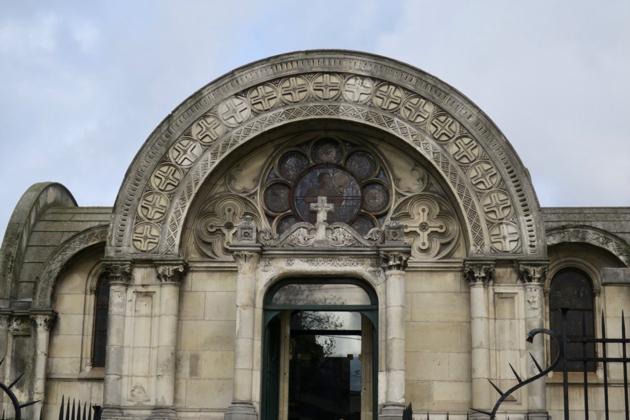
Paris is one of the grand cities of late Western civilization – entirely taken up with business, shopping, eating, beauty care, tourism, etc. But as a sombre counterpoint to all this relentless activity are the funerary monuments of the 19th century. Now located in very commercial districts but entirely off the touristic beaten path, they commemorate the victims of the disasters, crimes and misfortunes of the past. Like the tall clock in the last black velvet room in The Masque of the Red Death, they serve as a stark memento mori to the revelers outside, lost in the frenzy of modernity. They also bear witness to the once strong Catholic faith of France – even amid the secularizing society of the 19th century. A fortunate “break in the action” on a recent business trip gave me the opportunity to revisit these memorials.
Not too far from the Gare Saint-Lazare is the Chapelle Expiatoire, the oldest and largest of the chapels we will consider. It commemorates the spot where the bodies of Marie Antoinette and Louis XVI were found after the restoration of the monarchy in 1815. After their execution by the Revolutionary government, their bodies had been unceremoniously deposited in the cemetery of the Madeleine which soon received so many more victims as the terror progressed. The chapel was erected by Louis XVIII, the first king of the restoration and finished in 1826 by his successor, Charles X. Like the other chapels we will visit, the Chapelle Expiatoire is a cenotaph – King Louis XVI and Marie Antoinette were reburied in the basilica of Saint Denis.
Once located in a romantic park, the chapel is now surrounded by 19th century commercial buildings. An entrance pavilion leads to an open walkway flanked by unmarked graves on either side – commemorating the Swiss guards of the king massacred in 1792. They now stand eternal watch before what had been the resting place of their king. The domed chapel itself is a severe yet brightly lit neoclassical space. The decoration of the ceilings and floor is simple and elegant: that is also true of the sanctuary which unfortunately is no longer in regular use. In the side apses are statues of King Louis XVI and Marie Antoinette consoled by Faith and an angel.
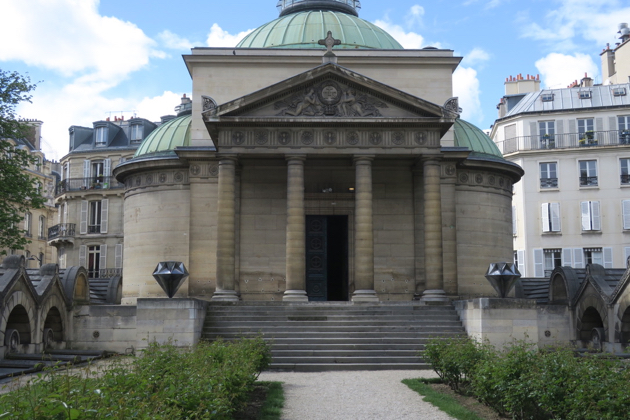
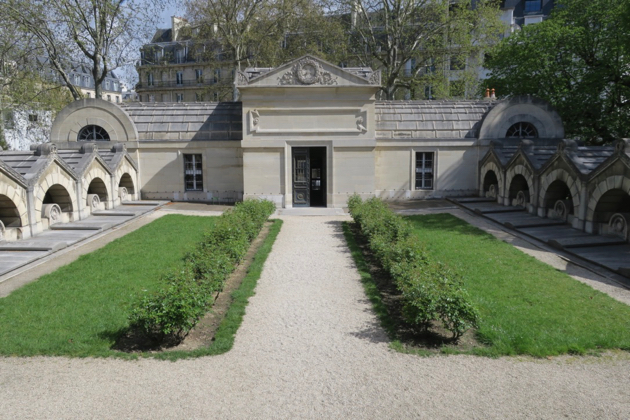
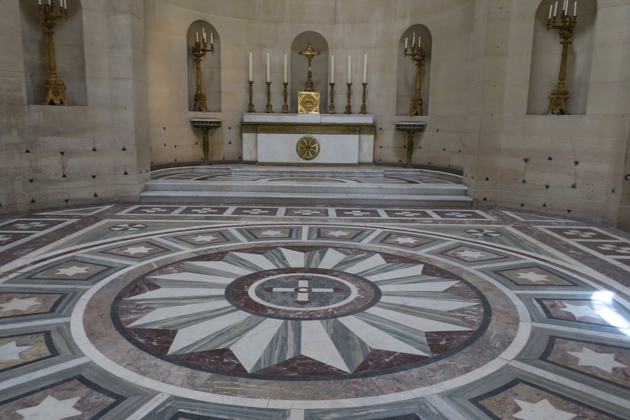
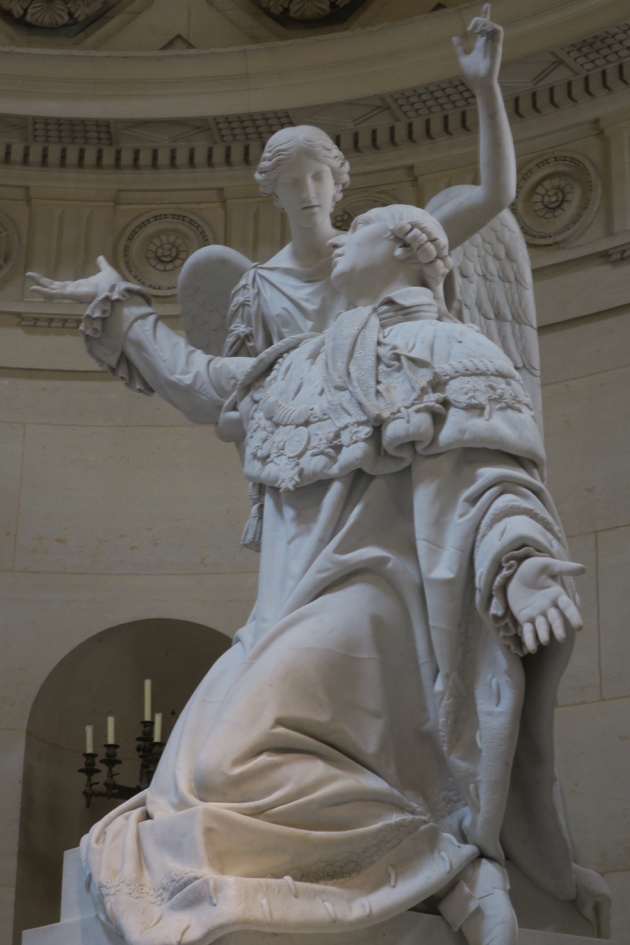
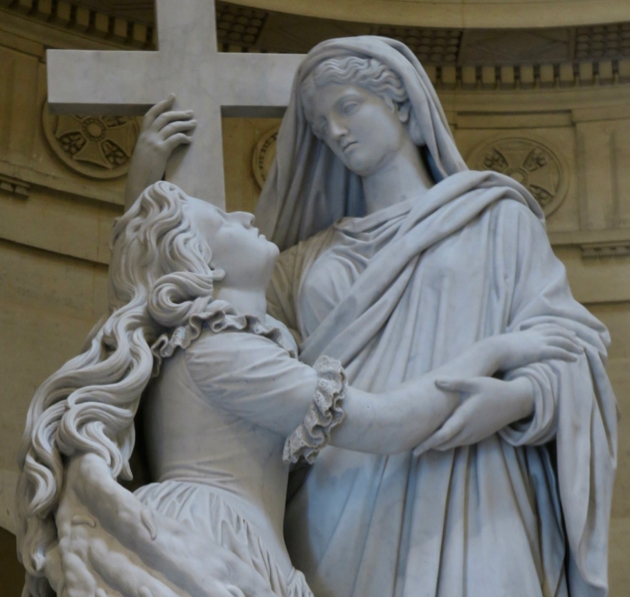
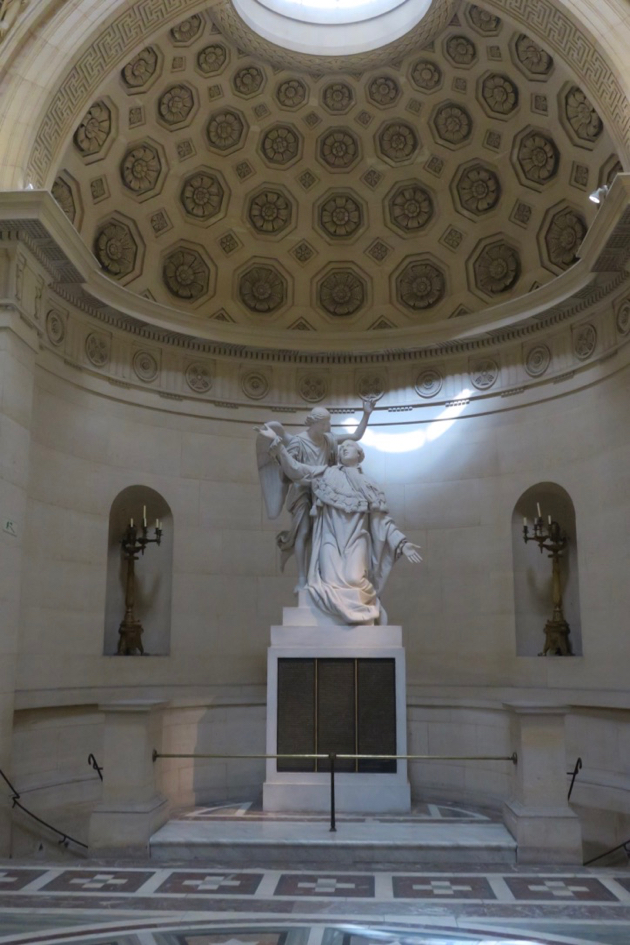
Marie Antoinette was originally scheduled to be guillotined between two prostitutes….
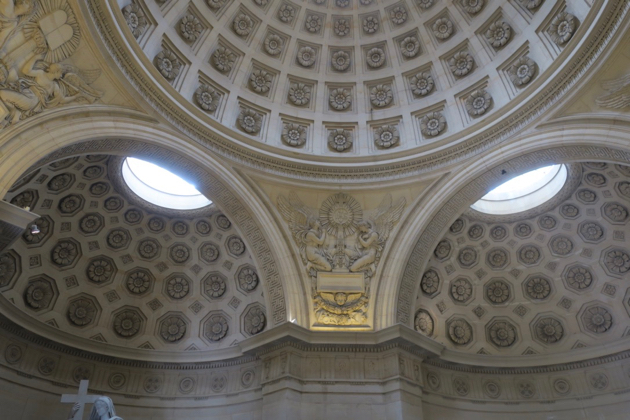
In a dark passage beneath the chapel is a starkly simple altar marking the spot where the royal bodies were found. One thinks of the many other victims dumped in this cemetery whose bodies may not have been exhumed. Returning to the surface, a visitor can explore arched aisles that flank the chapel grounds. These passages, sheltered from the noise of the traffic outside, inspire one to reflect once more on the many early, forgotten victims of the birth of modernity who were or still are interred here.
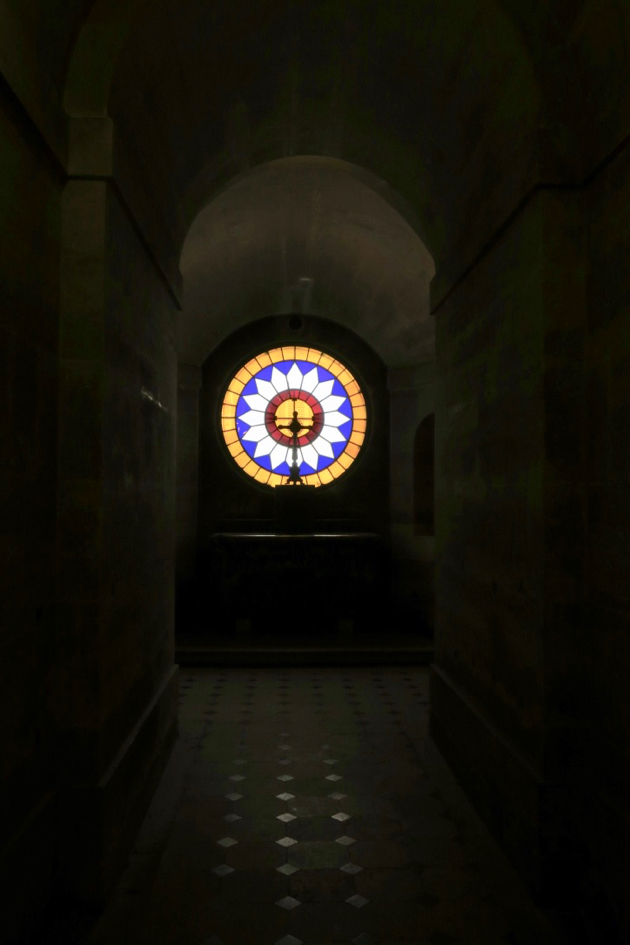
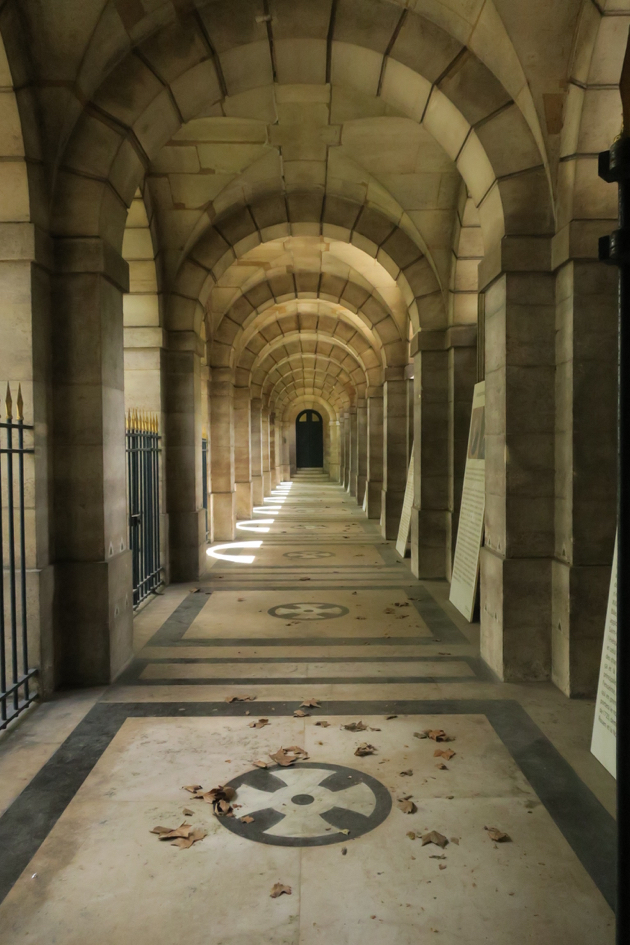


In the 19th century the Chapelle Expiatoire was threatened again and again by revolutionaries, Communards and freemasons. The altar has not been used regularly since the !880’s. By 1914 the ideological threats had abated, and the chapel has survived until our time, if only as a “national monument.” But each year a memorial mass is still celebrated on the day of Louis XVI’s death, January 21.
The Chapelle Notre Dame de Compassion sits in a small park – a kind of traffic island – not too far from Porte Maillot. Near here, in 1842, Prince Ferdinand-Philippe, heir to the French throne, fell out of his coach when the horses reared. He died in a nearby house. It was a catastrophe for the Orleans monarchy, which had been pursuing a dubious “middle way” between Christian monarchy and 19thcentury capitalism.
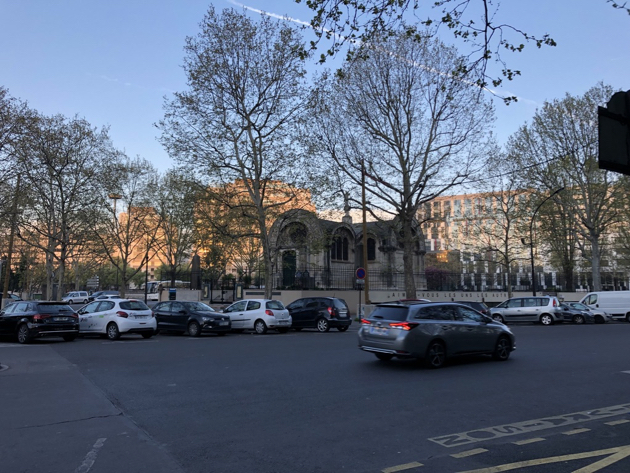
King Louis-Philippe and Queen Marie-Amélie had a chapel constructed on the location of his death. Completed in 1843, it has remained near this site ever since. I say remained, because in the 1970 it was moved, stone-by-stone, a few hundred yards to accommodate the construction of the monstrous Palais des Congres.
The architecture, in a Byzantine style, makes a dark, mysterious impression. Inside, the sombre effect is reinforced by the exposed stonework and the black and white of the floor and altar. Yet this small chapel has some remarkable works of art. A marble sculpture by Triqueti shows Prince Ferdinand-Philippe at the moment of death. Above is a praying angel, sculpted by Ferdinand-Philippe’s sister, Marie d’Orléans, one of the first female sculptors in Europe. Triqueti also created the expressive Pieta above the altar with the features of the prince and his mother.

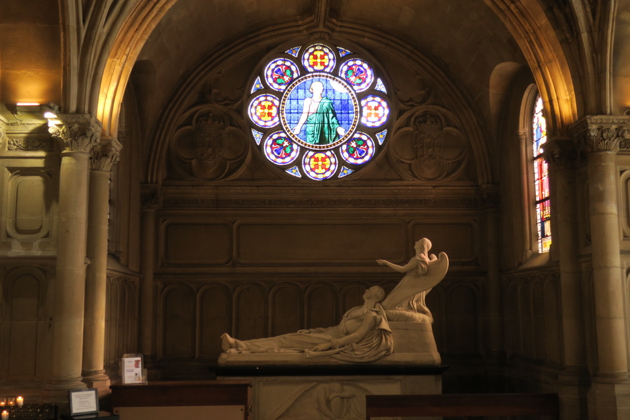
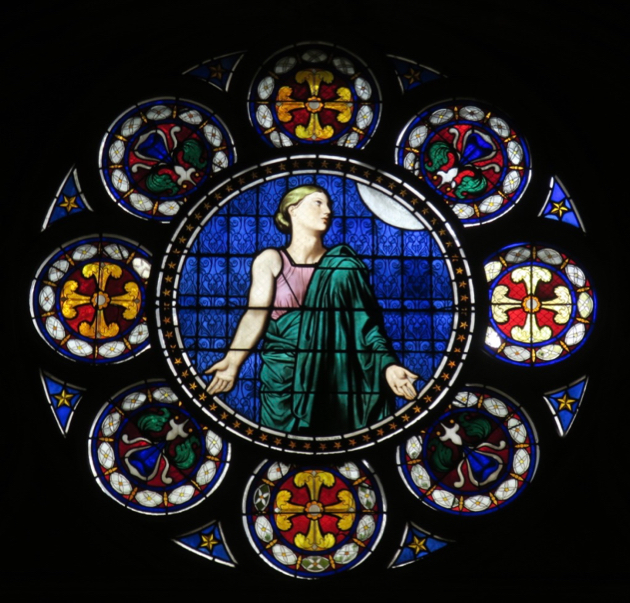
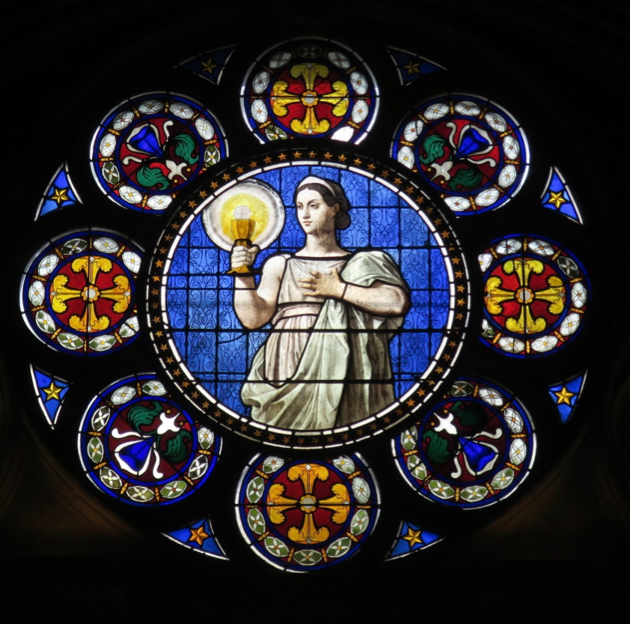

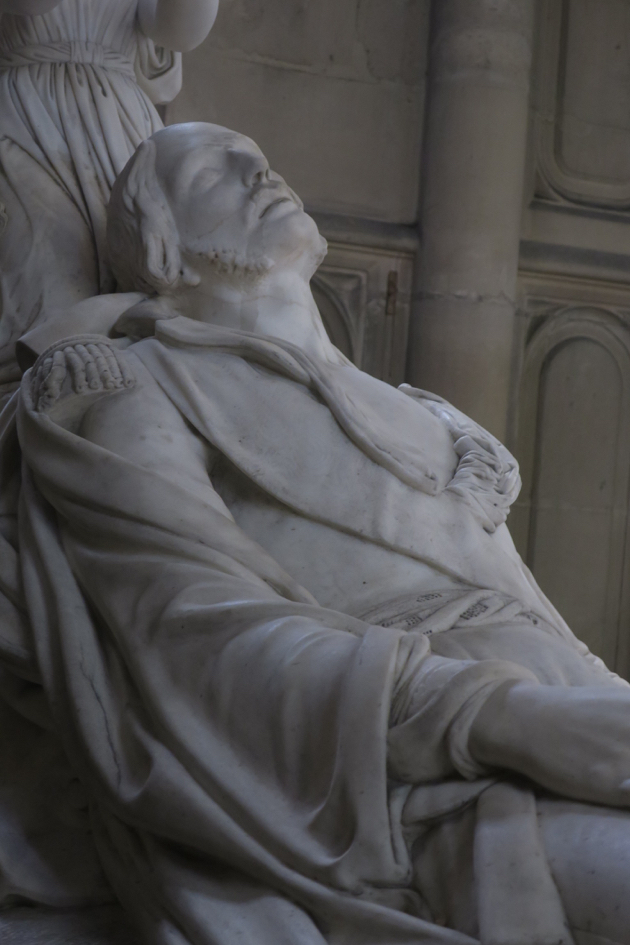
But the chapel’s real treasure is the set of the stained-glass windows, made to the designs of Ingres. They depict the theological virtues and saints associated with the reigning French royal family. The obscure interior displays them to great advantage. Close inspection reveals that St. Philip has the features of Louis-Philippe, Saint Amalia those of the Queen and that St. Ferdinand is a portrait of the defunct prince. Perhaps we look askance such practices nowadays! But Ingres – a partisan of King Louis-Philippe – left here a remarkable achievement in a medium not normally associated with his neoclassical style. And the chapel itself, combining in its architecture and decoration Byzantine, neoclassical, Romanesque and realistic elements is a remarkable artistic success.
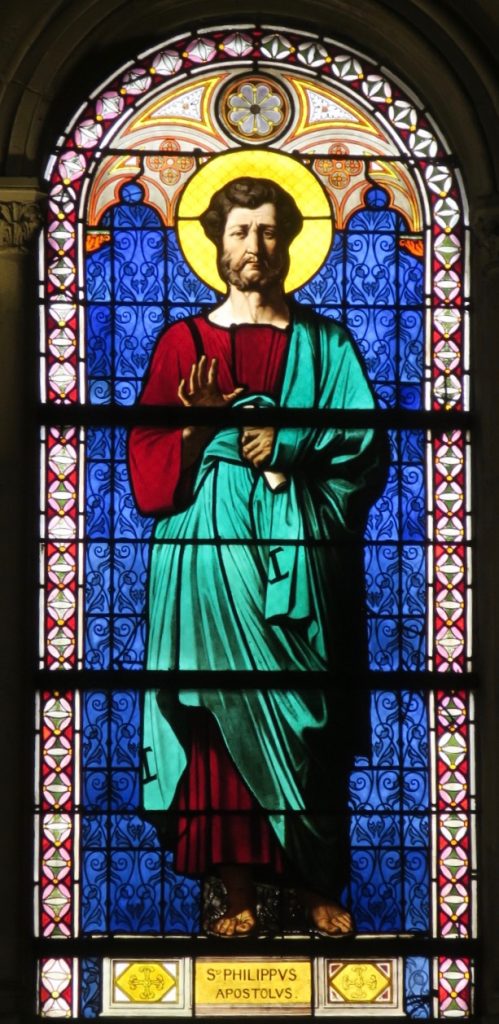


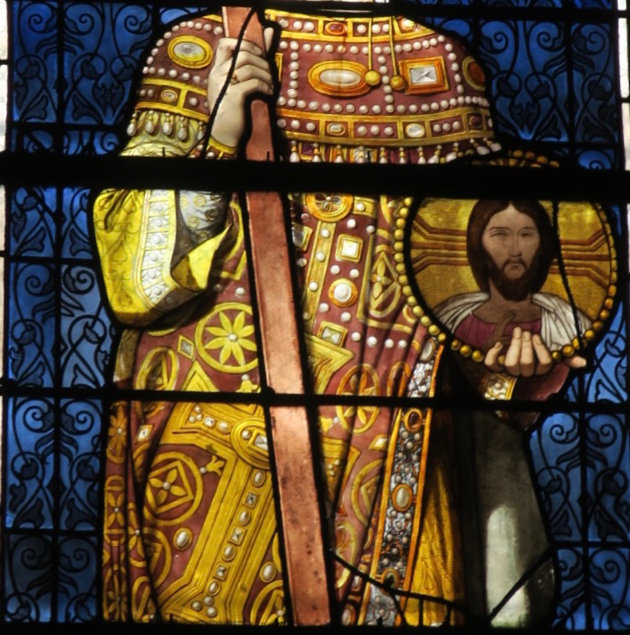
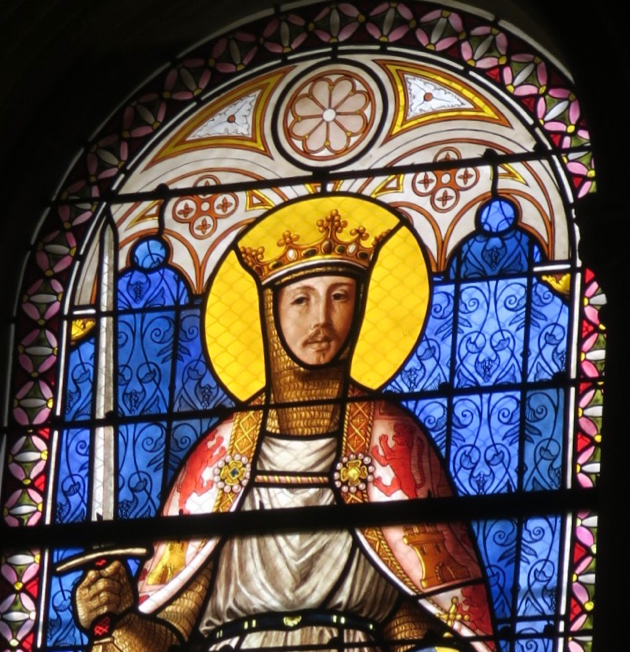
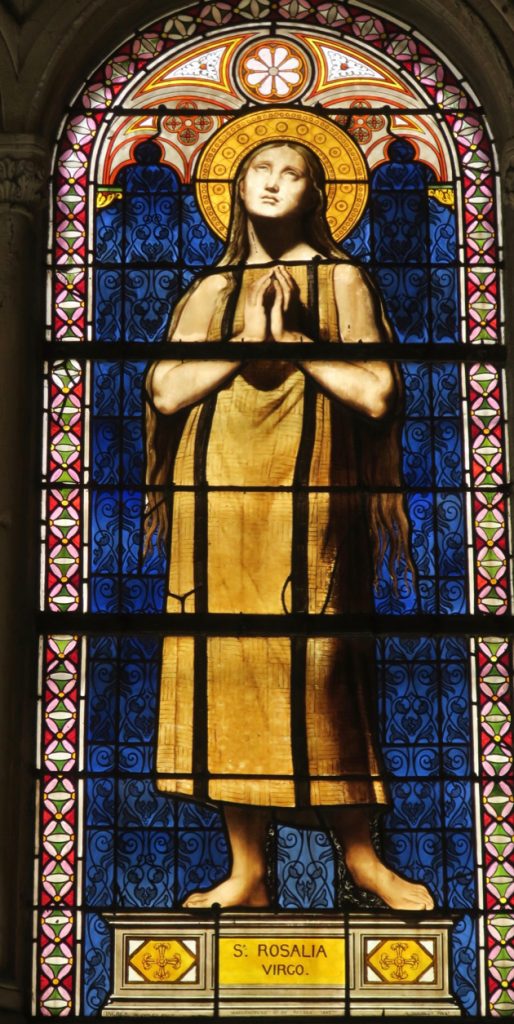
In contrast to the Chapelle Expiatoire, Notre Dame de Compassion remains an active church; indeed, in 1993 it was elevated to a parish. There are usually one or two women at prayer; fresh flowers are placed before the altar. Are they a legacy from the dwindling ranks of the French monarchists? Or is this silent, obscure interior – commemorating a tragedy of so many years ago – especially conducive to prayer by those beset by the sorrows of a deaf and unforgiving world?
The Chapelle Notre Dame de Consolation, located a couple of blocks from the heart of the luxury shopping district of Paris, is the memorial of a horrific tragedy in 1897. The Bazar de la Charité was an annual fundraising event sponsored by Catholic aristocrats. In 1897, the lavish pavilion featured a recent invention: a movie projector. But, powered by very flammable oil, it exploded when the fair was full of visitors. Within minutes the bazaar was a mass of flame. Women ran out with their elaborate hats of the fashion of that day aflame; others were burned alive or trampled to death in the crush. When it was over some 126 people – mostly Catholic, mostly women and children, were dead. This tragedy left its mark in the literature of the time: Joris-Karl Huysmans and Leon Bloy – the latter in a singularly unpleasant commentary – make reference to it. Now and then it returns to the public eye. The New York Times wrote about it some ten years ago and a French television channel is supposed to air a presentation on the Bazar de la Charité this year.
The families of the victims purchased the fairgrounds where the tragedy occurred and funded the construction of the chapel, completed in 1900. It is a lavish affair, reproducing in Paris a 17thcentury Roman baroque church. The interior overflows with marble and statuary, gleaming metalwork and paintings. Above, in the cupola, the Virgin points out to the victims the path leading to Paradise.
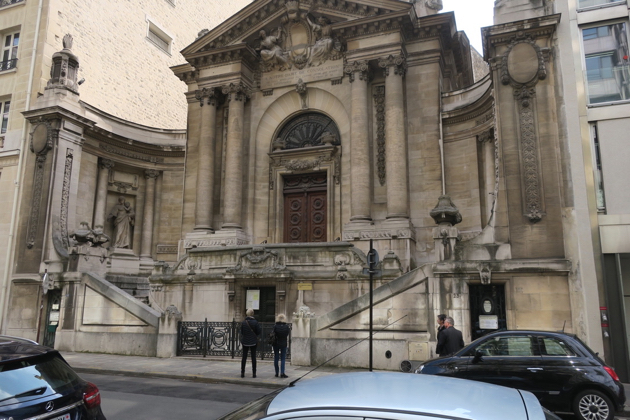
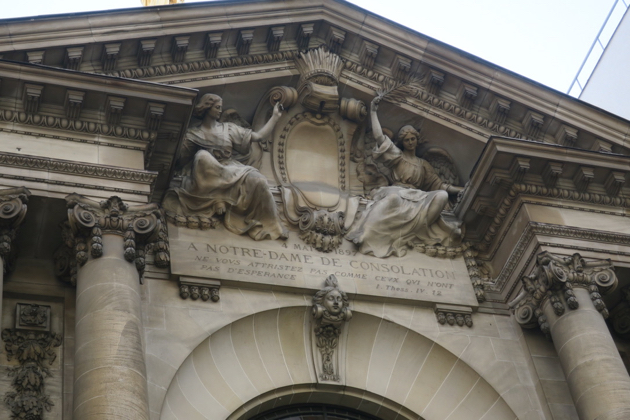
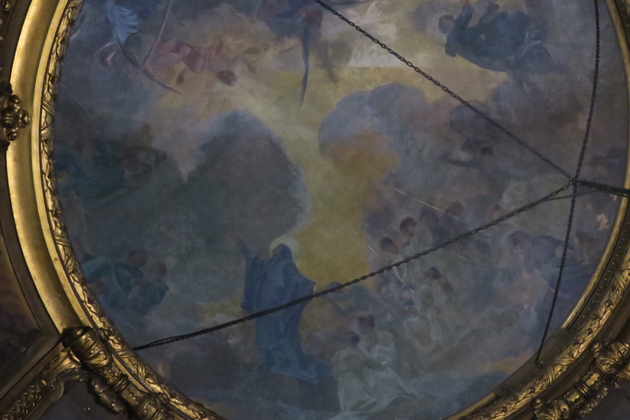
At the rear of the church is a “cloister” with beautiful silver stations of the cross. Set among the solemn halls are sculptures and cenotaphs commemorating the dead. A marble copy of a famous image of the dead Christ in Naples was donated by an American woman who had escaped the flames. An elegant cenotaph honors the memory of the most prominent victim: Sophie Charlotte of Bavaria, the Duchesse D’ Alencon. She was the sister of the famous Sissi – the wife of Emperor Franz Joseph – and herself once had been betrothed to King Ludwig II of Bavaria. The most poignant memorial, however, is a case holding personal items rescued from the inferno: rosaries and prayer books belonging to the victims as well as two charred dolls….
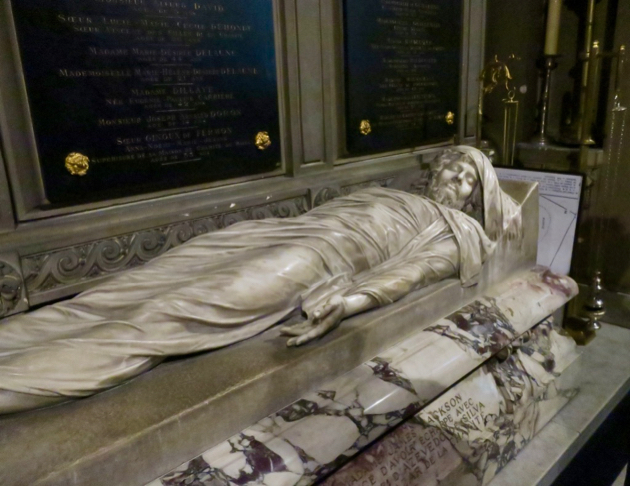

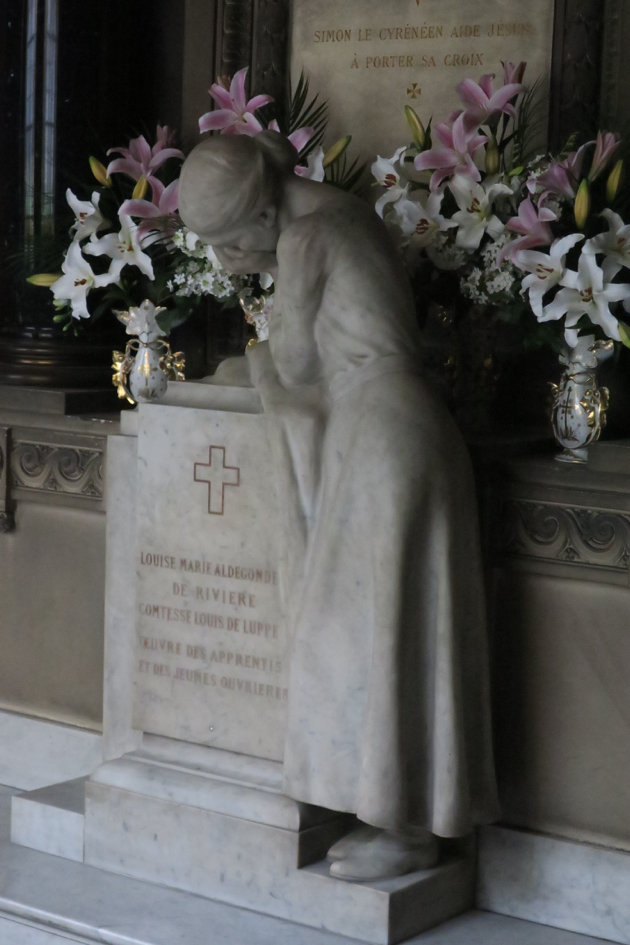
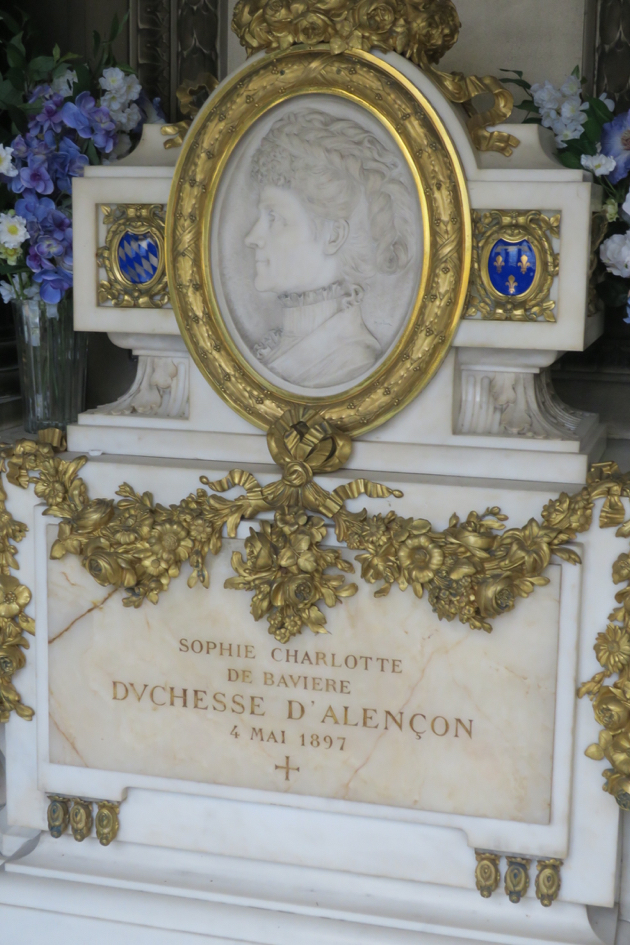
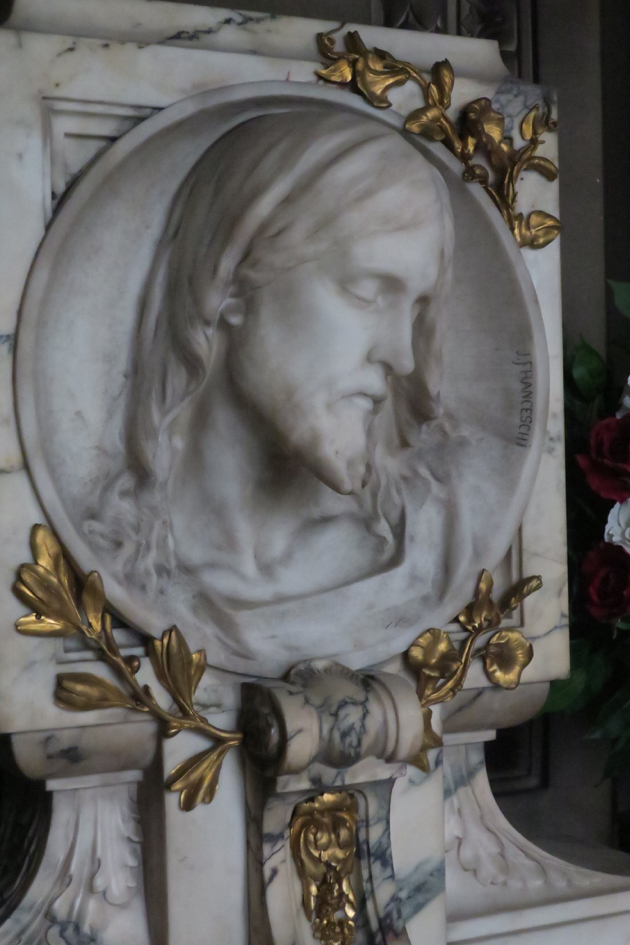
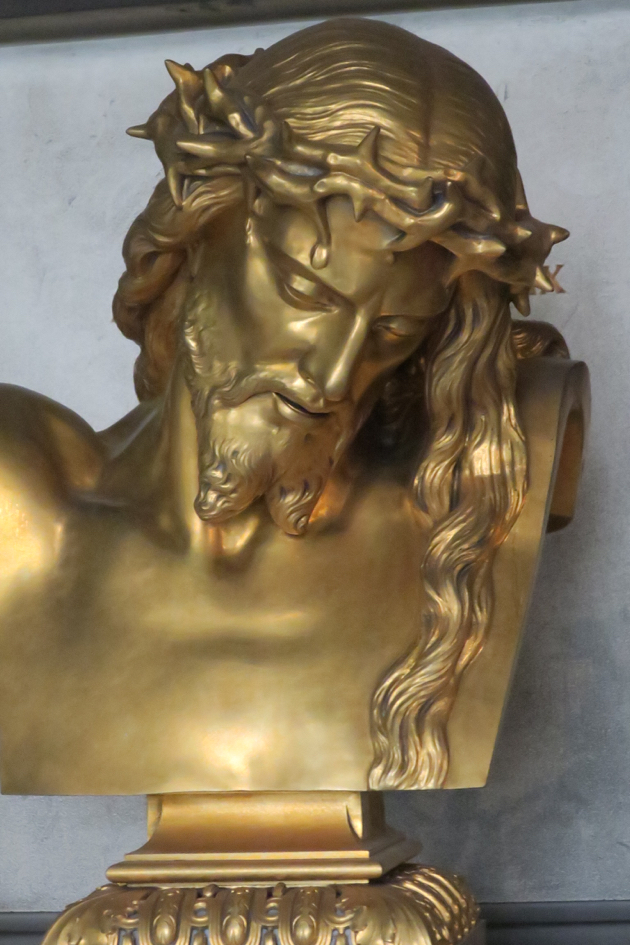
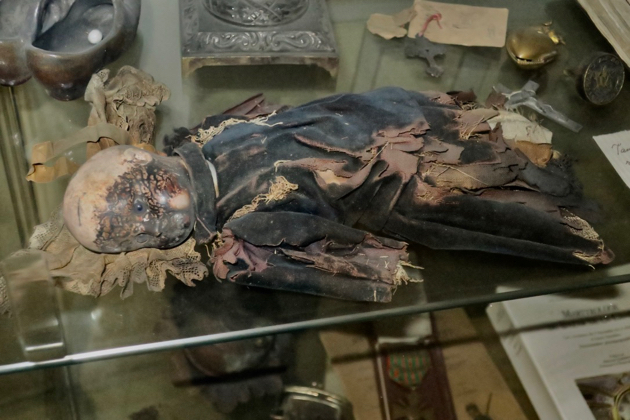

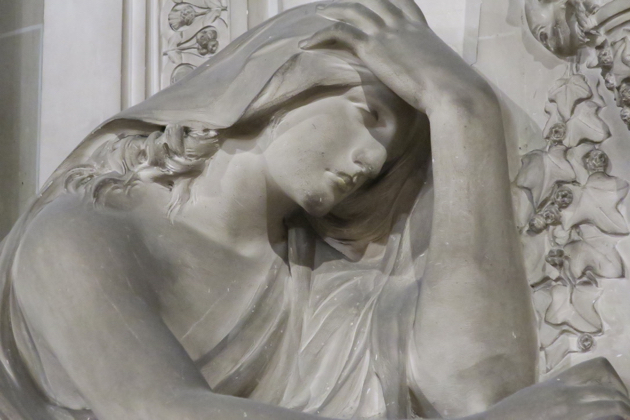
Despite all the splendor, Notre Dame de Consolation is a somber memorial, quiet and mysterious. Yet it is also full of life. Because the chapel still belongs to the association of the descendants of the victims, it is outside the jurisdiction at the Archdiocese of Paris. Not long ago the association entrusted the chapel to the FSSPX. At mass times the chapel is full again. indeed, Notre Dame de Consolation today boasts an amenity not commonly needed in the Catholic churches of France: a cry-room! So, this domain of the dead has returned to full life, both liturgically and physically. I am sure the victims of that long-ago disaster are pleased!
4
Apr
The American Delegation of the Sacred Military Constantinian Order of Saint George invites you to a Solemn High Mass that we will be sponsoring in honor of Our Lady of Sorrows to be celebrated for the persecuted Christians of the Middle East at Most Precious Blood Church at 113 Baxter Street in Manhattan’s Little Italy on Friday, April 12th at 7:15 p.m.
